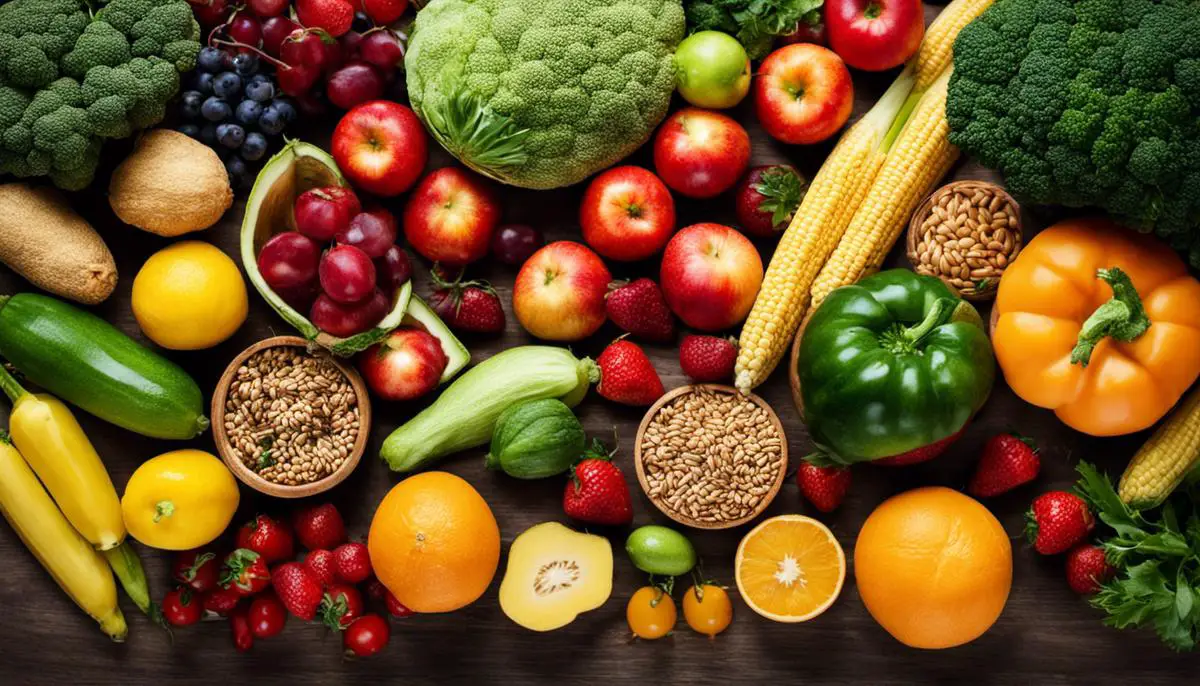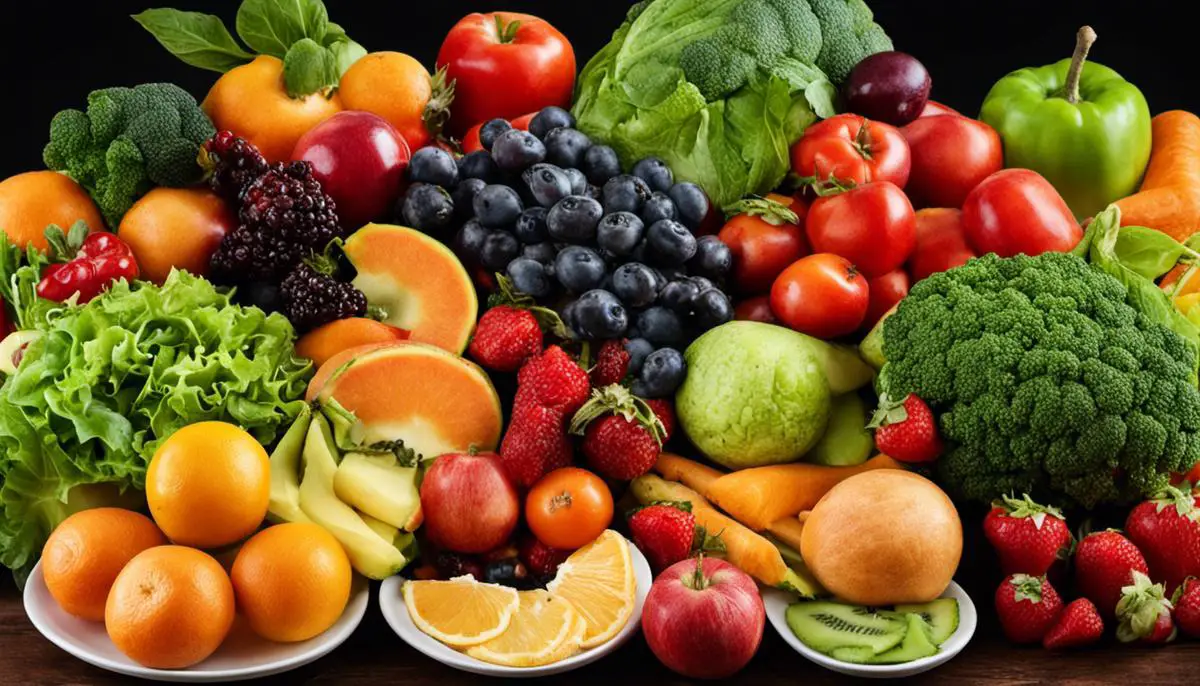The DASH diet, short for Dietary Approaches to Stop Hypertension, is a scientifically backed, health-focused diet plan designed to combat high blood pressure and promote overall wellness. Concisely, it emphasizes a balanced intake of fruits, vegetables, whole grains, lean proteins, and dairy, all aimed at maintaining a healthy lifestyle and reducing hypertension. The significance, principles, guidelines, benefits, and practical application of the DASH diet, as well as strategies to overcome associated challenges, will be explored in the remainder of this piece.
What is the DASH Diet?
Understanding DASH Diet: Dietary Approaches to Stop Hypertension
The term DASH stands for Dietary Approaches to Stop Hypertension, a health initiative designed to tackle the prevalent issue of high blood pressure or hypertension. The central purpose of this dietary plan is to mitigate the risk of developing hypertension and other related health conditions like heart diseases, stroke, and kidney diseases among others.
The DASH diet is placed highly on the scale of health-conscious dietary patterns. It encourages a diet rich in fruits and vegetables, whole grains, lean proteins, and low-fat dairy products while restricting the consumption of foods saturated with high sodium, sugar, and unhealthy fat levels.
Origins of the DASH Diet
The DASH diet is a product of extensive research sponsored by the US National Institutes of Health. These studies were initiated in response to the increasing cases of hypertension and heart-related health issues among Americans. Among those investigations is the DASH-Sodium trial that examined the impact of a reduced sodium intake on blood pressure, further strengthening the credibility and effectiveness of the DASH diet.
Who is the DASH Diet Recommended For?
Though originally developed for individuals with high blood pressure, the DASH diet is recommended to anyone keen on embracing healthier eating habits for improved well-being. The nutrient-rich diet offers benefits beyond blood pressure control. It helps in weight loss, lowers cholesterol, and reduces the risk of several chronic conditions like diabetes and certain cancers.
This diet is also recommended for individuals with existing conditions like diabetes, heart disease, or renal disease as the nutrient profile of the DASH diet aligns well with dietary recommendations for these conditions.
Understanding the DASH Diet and its Significance for Health
The DASH diet, an eating plan focused on reducing hypertension and fostering good health, emphasizes the importance of managing sodium intake for optimal blood pressure maintenance. An excessive intake of sodium can lead to water retention in the body, creating an excess strain on the heart and blood vessels that may result in hypertension.
In addition to controlling sodium, the DASH diet encourages the consumption of various nutrient-dense foods, thereby promoting overall health. Its suggestions for heart-healthy food types, coupled with its guidance on portion control and physical activity, make it a multifaceted approach to nutrition. By encouraging a diet rich in fruits, vegetables, low-fat dairy products, whole grains, fish, poultry, and nuts, the DASH diet provides a wholesome, diverse, and balanced regimen that fulfills nutritional needs and offers protection against chronic diseases.
Helping in achieving and maintaining a healthy weight, the DASH diet underpins the importance of portion control – understanding serving sizes and adjusting accordingly to avoid overeating and unhealthy weight gain. It also emphasizes regular physical activity, an integral component to overall health and well-being.

The Principles and Guidelines of the DASH Diet
The Fundamental Tenets of the DASH Diet
The Dietary Approaches to Stop Hypertension or DASH diet is a comprehensive eating plan, strategically designed to regulate high blood pressure. Prioritizing nourishing food types, the DASH diet aims to minimize the consumption of fats, salt, sugar, and red meats. Beyond simply suggesting beneficial food types, the DASH diet lays down clear goals for daily and weekly nutritional intake, highlighting the importance of moderation and balanced distribution of nutrients.
Daily and Weekly Nutritional Goals of the DASH Diet
Typically, the DASH diet recommends individuals consume 2,000 calories daily. However, this can differ based on age, sex, and level of physical activity. Your daily goals on the DASH diet should aim for around 7-8 servings of grains, 4-5 each of fruits and vegetables, 2-3 of dairy products, and less than 2 servings of lean meat, poultry, or fish.
For your weekly goals, aim to eat 4-5 servings of nuts, seeds, and legumes, and keep sweets down to less than 5 servings a week. Sodium should also be limited to 2,300 mg a day, or 1,500 mg if you are over the age of 50 or have certain health conditions.
Food Groups Emphasized by the DASH Diet
The DASH diet emphasizes foods that are rich in potassium, magnesium, calcium, and fiber. These food groups include fruits, vegetables, whole grains, lean proteins, and low-fat dairy.
Fruits and Vegetables
These food groups serve as the foundation of the DASH diet. They are high in fiber, potassium, and magnesium and are naturally low in fat. These nutrients are important for controlling blood pressure. The DASH diet recommends between 4 to 5 servings of both fruits and vegetables each day.
Whole Grains
Whole grains, such as brown rice, whole grain bread, whole grain pasta, and oatmeal, are rich in fiber and help to reduce blood pressure by lowering cholesterol levels. Under the DASH diet, it’s suggested to consume 7-8 servings of whole grains per day.
Lean Proteins
Lean proteins such as fish, poultry, and lean cuts of meat are important for providing essential nutrients without excessive fat and cholesterol. The DASH diet advises less than two servings of these proteins per day.
Dairy
The DASH diet recommends 2-3 servings of low-fat dairy products per day. These provide the body with the necessary calcium and vitamin D.
Sample Meals for the DASH Diet
A typical day on the DASH diet may start with a breakfast of whole-grain cereal with fruit and low-fat milk. Lunch could be a lean turkey sandwich on whole grain bread with a side salad, and dinner might feature baked fish with a side of brown rice and steamed vegetables. Snacks might include nuts, fruits, or low-fat yogurt.
The DASH diet incorporates principles and meal-planning strategies based on natural, nutrient-rich foods. By adhering to these methods, individuals can effectively reduce or manage high blood pressure, while at the same time, maintaining a balanced and healthy diet.

Benefits and Scientific Evidence
Delving into the DASH Diet
DASH, standing for Dietary Approaches to Stop Hypertension, is a dietary blueprint crafted to lower or keep high blood pressure under control. Its emphasis lies on foods teeming with fruits, vegetables, lean proteins, whole grains, and low-fat dairy products. Moreover, the DASH Diet advises limiting the intake of foods high in saturated fats, cholesterol, trans fats, sweets, and sugary beverages.
Lowering High Blood Pressure
Research studies completed by the National Heart, Lung, and Blood Institute (NHLBI) demonstrated that the DASH diet effectively reduces blood pressure. A study published in the New England Journal of Medicine found that participants following the DASH diet had a significant reduction in their systolic and diastolic blood pressures compared to the control group.
Weight Loss and DASH Diet
In addition to reducing blood pressure, the DASH diet also aids in weight loss. This is primarily due to the focus on lean proteins, whole grains, fruits, and vegetables, which tend to be low in calories while still being filling. According to a study in the American Journal of Clinical Nutrition, participants who followed the DASH diet lost weight effectively across a range of caloric intake levels.
Reducing Risks of Heart Disease
The DASH diet is also associated with a lower risk of developing heart disease. A research study published in the journal Circulation found that adherence to the DASH diet is associated with a significant reduction in the risk of heart disease and stroke. This is largely attributed to the diet’s emphasis on heart-healthy foods, such as fruits, vegetables, lean proteins, and low-fat dairy products.
Preventing Diabetes
The DASH diet can also help prevent diabetes. This is mainly due to the diet’s low sugar and high fiber content. A study in the journal Diabetes Care revealed that adhering to the DASH diet can significantly reduce the risk of developing type 2 diabetes. The high fiber content in the diet helps to slow down the digestion of food and consequently slows down the rate at which sugar is released into the blood, helping to prevent spikes in blood sugar levels that can lead to diabetes.
Impact on Osteoporosis
In addition to all the mentioned benefits, the DASH diet can also reduce the risk of osteoporosis. It encourages the consumption of dairy products that are high in calcium and vitamin D, nutrients essential for bone health. The American Journal of Clinical Nutrition study pointed out that the DASH diet has a positive effect on bone health, especially among older women.
Impact on Digestive Health
Because of its high fiber content, the DASH diet can also positively impact digestion. Fiber adds bulk to stool and aids in its passage, reducing the likelihood of constipation. According to a study in the American Journal of Gastroenterology, a high-fiber diet can reduce the risk of developing diverticulosis, a condition characterized by pouches in the digestive tract that can become inflamed or infected.
The DASH Diet and Mental Health
Promising research suggests that the DASH diet could have potential benefits in the realm of mental health. Specifically, a study published in the Archives of General Psychiatry found that a diet comprising primarily fruits, vegetables, whole grains, and lean proteins—characteristics that align closely with the DASH diet—might exert positive effects on mood, possibly assisting in the management of depression and anxiety. Although further research is required, these initial findings do indicate a hopeful association.

Sample DASH Diet Meal Plans
What is the DASH Diet?
Designed initially to combat hypertension, the DASH (Dietary Approaches to Stop Hypertension) diet places emphasis on the consumption of fruits, vegetables, lean proteins, whole grains, and low-fat dairy products. Despite its origins as a diet aimed at lowering blood pressure, it has since been recognized as a comprehensive plan for wholesome eating. Importance is placed on control of portion size, incorporation of a diverse range of foods, and ingestion of a balanced stream of nutrients as per the DASH diet.
1200-calorie DASH Diet Day Plan
If you’re following a 1200 calorie DASH diet, your day might be structured like this:
Breakfast: 1 medium apple, 1 slice of whole-wheat bread, 1 tablespoon of almond butter, 1 cup of non-fat yogurt
Lunch: 2 slices of whole-wheat bread, 2 ounces of turkey, 1 ounce of cheese, a small apple, and 1 tablespoon of mustard
Dinner: 3 ounces of grilled chicken, 1 cup of broccoli, 1/2 cup of cooked quinoa, 1 medium orange
Snack: 10 baby carrots and 2 tablespoons of hummus
1600-calorie DASH Diet Day Plan
For a 1600-calorie intake on the DASH diet, the following is a practical example:
Breakfast: 1 slice whole grain toast, 1 tablespoon of peanut butter, 1/2 of a grapefruit, 1 cup non-fat Greek yogurt
Lunch: 1 cup mixed vegetables, 3 ounces of grilled chicken, 1/4 cup of shredded cheese, 2 tablespoons of low-fat dressing, 1 small apple
Dinner: 4 ounces of broiled fish, 1 cup of green beans,1/2 cup of brown rice, 1 medium baked sweet potato
Snacks: 1 small banana and 23 almonds
2000-calorie DASH Diet Day Plan
If you’re aiming for 2000 calories, here is a possible meal plan:
Breakfast: 1 cup of cooked oatmeal topped with 1 medium sliced banana and 2 tablespoons of chopped walnuts, 1 cup of low-fat milk
Lunch: 2 slices of whole-wheat bread, 3 ounces of lean turkey, 1 ounce of cheese, 1 tablespoon of mayonnaise, lettuce, a medium apple
Dinner: 4 ounces of grilled salmon, 1 cup of roasted Brussels sprouts, 1/2 cup of cooked brown rice, 1 cup of mixed berries topped with 2 tablespoons of whipped cream
Snacks: 2 small plums and 1 small low-fat yogurt
Embarking on a Week with the DASH Diet
As you begin your journey on the DASH diet, you may find yourself exploring a diverse range of meals and snacks throughout the week. You can combine some of the sample meal plans provided, or personalize your dietary intake by experimenting with your favorites among DASH diet-approved foods. It’s crucial to understand that the DASH diet is not solely about losing weight. Rather, it’s oriented towards promoting controlled, healthy eating habits. As is the case with starting any new diet, having a conversation with your doctor or dietitian can provide valuable insights and guidance.
Challenges and Overcoming Them
Navigating the Challenges of the DASH Diet
The DASH Diet, an acronym for Dietary Approaches to Stop Hypertension, is an enduring commitment to healthier eating habits, formulated to treat or prevent high blood pressure. This diet emphasizes reducing your daily sodium intake and invites you to explore foods rich in nutrients known for their blood pressure-lowering capabilities. Despite its immense potential benefits and sustainability, individuals often face a myriad of challenges when attempting to formally adopt it into their lifestyle.
Defeating Cravings
One significant challenge is managing cravings for foods that fall outside of the DASH Diet. The diet advises you to lower your sodium and sugar intake, which can be difficult if you’re accustomed to eating processed foods or meals with high sugar content. To manage these cravings, it can be beneficial to introduce gradual changes into your diet. Start by reducing your intake of sweet snacks and sugary drinks gradually, which can make the transition less drastic. Instead of indulging in processed foods, experiment with healthier alternatives like fruits, nuts, and seeds.
Eating Out While on the DASH Diet
Another obstacle associated with the DASH Diet is the difficulty of maintaining it while eating out. Many restaurant dishes have high sodium content and lack the essential nutrients recommended by the DASH Diet. Many people end up making unhealthy choices or simply giving up when faced with limited diet-friendly options. To overcome this, plan your eating out experiences in advance. Many restaurants have online menus where you can verify the nutritional information of their dishes. Choose restaurants that offer healthier options or are willing to accommodate your dietary preferences.
DASH Diet for the Busy Lifestyle
Incorporating the DASH Diet into a busy lifestyle can be challenging. Preparing meals at home is a crucial aspect of the diet. This could be difficult for those who have a demanding job or a busy family life. One way to overcome this is through careful meal planning and preparation. Consider making larger quantities of DASH-friendly meals that could be refrigerated or frozen and consumed over several days. This approach allows you to have a healthy meal at home or on the go, even on your busiest days.
Finding the Motivation
Sticking to the DASH Diet requires a proper mindset and motivation. The benefits of the DASH Diet may not be visible immediately, which can make it difficult for some people to stay motivated. Try setting realistic goals, tracking your progress, and celebrating small wins. Keep in mind the long-term health benefits — not just weight loss, but also improved heart health and lower blood pressure.
Incorporating Physical Activities
In conjunction with the DASH Diet, regular physical activity can aid in maintaining a healthy lifestyle and managing hypertension. Yet, balancing the demands of a fitness routine alongside dietary changes can be a significant challenge. Start with integrating small amounts of physical activity into your daily routine such as walking or taking the stairs, and progressively increase the intensity.
Despite the challenges that come with adopting the DASH Diet, it is a beneficial lifestyle modification for many individuals. Remember that it’s okay to take small steps and gradually incorporate changes. Over time, these will amount to a significant transformation towards a healthier lifestyle.
